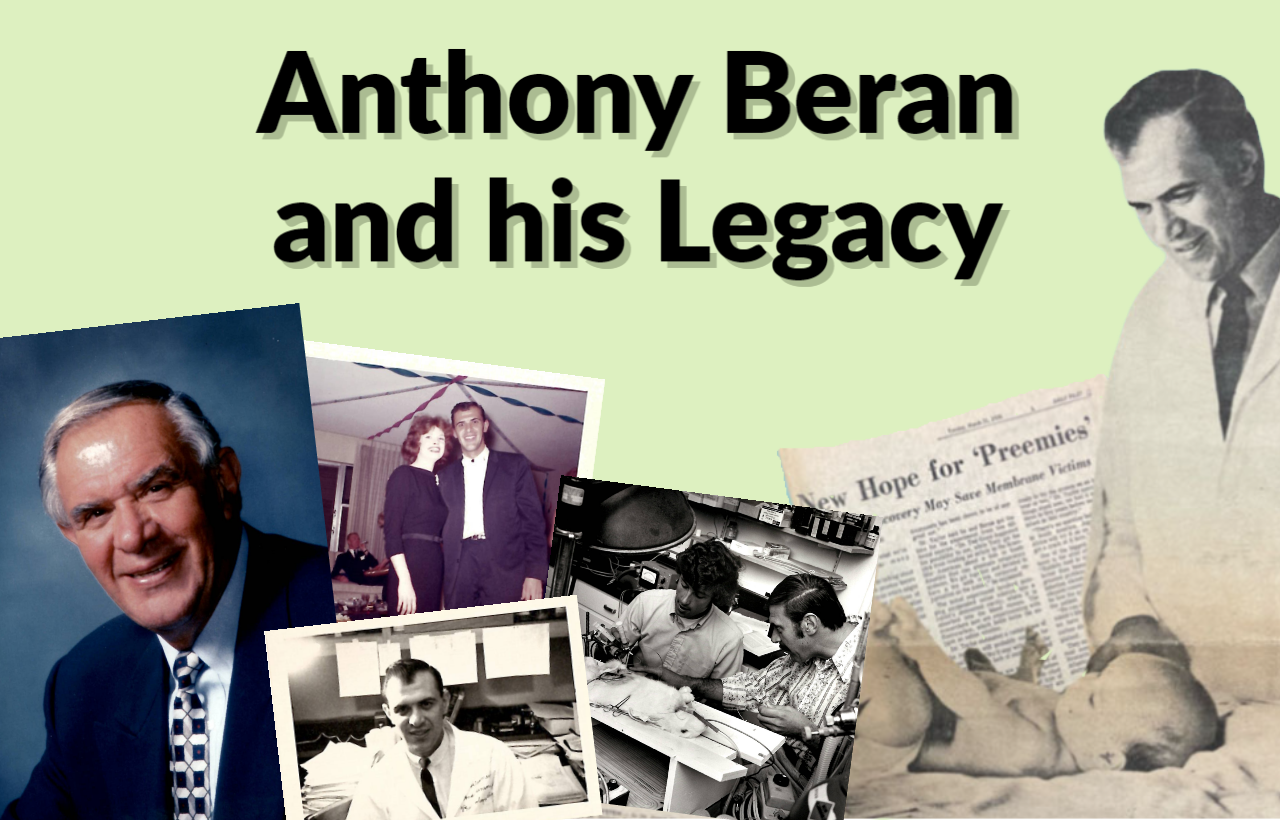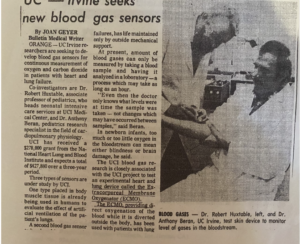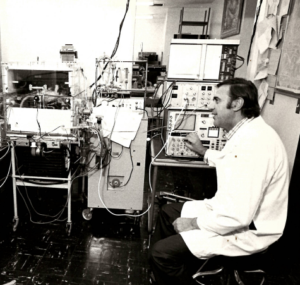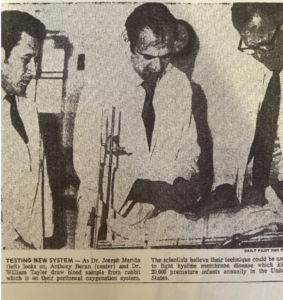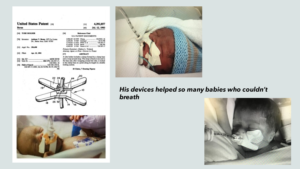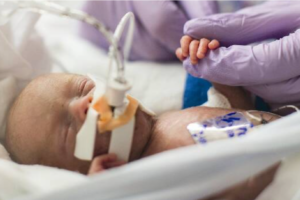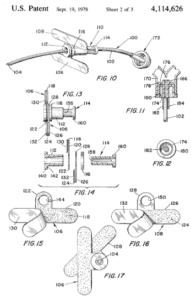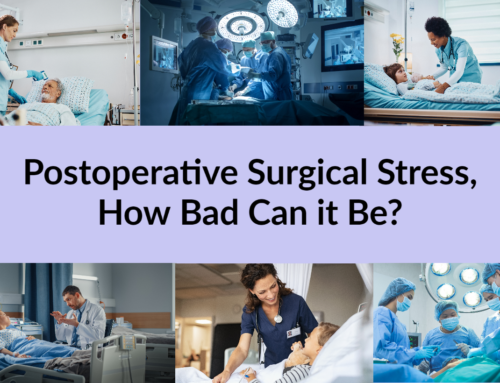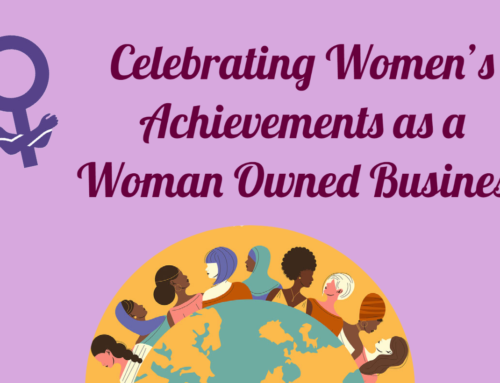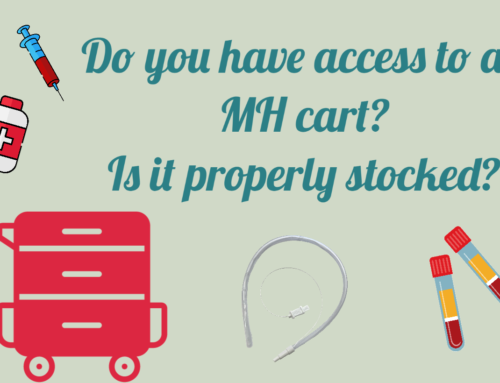Anthony Beran was born on June 12, 1935 on the island of Hvar in the country of Croatia. At the time of his birth, Croatia was not yet a country. Instead it was a state in the former communist country of Yugoslavia. He spent the majority of his early life in the beautiful Adriatic town of Cavtat. Being born before World War II, he had the toughness and integrity that was the hallmark of the great generation. During the war, Tony struggled without enough food to eat, and would at times steal food from a Nazi depot, only to be captured and almost executed on the spot. With the help of a thoughtful German soldier, Tony escaped execution. He often told his kids stories of life during times of war and how it impacted his determination to survive and make a difference in life.
In Cavat, Tony enjoyed simple activities involving the ocean. He played water polo with his two brothers for the local city team, sailed and fished. As he entered the highschool years he was fortunate enough to attend the high school in the medieval city of Dubrovnik. Nearly an hour away, the school bus was instead a school boat that cruised the Adriatic coast line between Cavtat and Dubrovnik. The high school in Dubrovnik was quite exceptional for its time. The students had to learn both English and Russian, cyrillic alphabet and all.
Tony valued education, and attended law school for a year. He eventually transitioned from pre-law to pre-med and studied forensic medicine at the University in Zagreb. Just as he was getting close to getting his MD, he was given the opportunity to defect from the communist Yugoslav regime that he could not refuse. Being a championship caliber rower, he was fortunate enough to be able to visit other countries to compete. During a competition in Austria, he chose to leave his team and try to find his way to the USA, the land of opportunity. For two years, he stayed at an internment camp in Germany, where he worked hard and underwent various tests to prove to the USA that he was an acceptable immigrant. He came to California where some of his family lived, and that is where he met his late wife Pat. They got married in 1960 and together raised two kids, Kerry and Mark.
Anthony Beran has always been a great inventor, especially when it comes to medical devices. He dedicated his entire life’s work to making patients’ and clinicians’ lives easier and better. With over 40 patents and 100 research publications, he has made his mark in the medical device industry. Over the years, Tony has been able to witness what his work has done for others and it has been very rewarding.
 Tony was a part of many research teams that made huge, impactful discoveries. He worked at Children’s Hospital in Los Angeles where he researched how to measure oxygen levels in neonatal and pediatric patients. He also specialized in weaning neonatal and pediatric patients off the ventilator and many of his later inventions were developed from this experience. At Children’s, he developed a novel oxygen delivery system for incubators which is still in use today. In addition, he conducted research on O2 and CO2 monitoring of the newborn.This was the predicate research that helped others continue to develop the modern day pulse oximeter. A device which is now used millions of times each day to assess a patient’s respiratory status.
Tony was a part of many research teams that made huge, impactful discoveries. He worked at Children’s Hospital in Los Angeles where he researched how to measure oxygen levels in neonatal and pediatric patients. He also specialized in weaning neonatal and pediatric patients off the ventilator and many of his later inventions were developed from this experience. At Children’s, he developed a novel oxygen delivery system for incubators which is still in use today. In addition, he conducted research on O2 and CO2 monitoring of the newborn.This was the predicate research that helped others continue to develop the modern day pulse oximeter. A device which is now used millions of times each day to assess a patient’s respiratory status.
Tony moved from Children’s Hospitals Los Angeles to University of California, Irvine Medical Center where he continued research on life saving initiatives for neonatal and pediatric patients. Tony was a leader in blood gas research at UCI. His research and ingenuity assisted Dr. Barlett’s team, with the development of ECMO (Extracorporeal membrane oxygenation). The first ECMO was developed at UCI and used on baby Esperanza to save her life. That technology is now a standard of care for critically ill patients and has saved countless lives.
(pictured on the right: a snippet of a news article that featured Tony. Tony is shown in the picture where his colleague is testing a skin device to monitor level of gasses in the bloodstream)
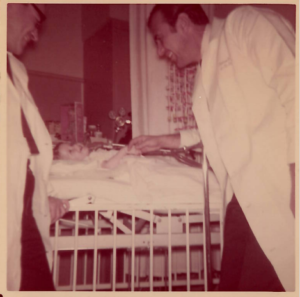 Tony always was an inventor and found unique ways to help patients. One of his pediatric patients was having trouble being weaned from the ventilator. The rigid circuit was heavy causing her tube to lean making spontaneous breathing trials difficult. This bothered Tony, as Jessica was otherwise pretty healthy and it was time for her to be removed from the ventilator. That afternoon as he was driving home from the hospital he was pondering on how to help baby Jessica wean from the ventilator. At a stoplight he was staring at the car in front of him, he noticed that the license plate was secured to the car with spring like hooks that were about 1 inch long. Once he arrived home, he dismantled his own license plate and took that spring, filing it down, sanitizing, dipping it in silicone, and sterilizing it. He created a reinforced silicone tube fitting that could bend. This allowed Jessica to wean from the ventilator much quicker.
Tony always was an inventor and found unique ways to help patients. One of his pediatric patients was having trouble being weaned from the ventilator. The rigid circuit was heavy causing her tube to lean making spontaneous breathing trials difficult. This bothered Tony, as Jessica was otherwise pretty healthy and it was time for her to be removed from the ventilator. That afternoon as he was driving home from the hospital he was pondering on how to help baby Jessica wean from the ventilator. At a stoplight he was staring at the car in front of him, he noticed that the license plate was secured to the car with spring like hooks that were about 1 inch long. Once he arrived home, he dismantled his own license plate and took that spring, filing it down, sanitizing, dipping it in silicone, and sterilizing it. He created a reinforced silicone tube fitting that could bend. This allowed Jessica to wean from the ventilator much quicker.
(pictured on the left, from left to right: Tony’s partner, baby Jessica, and Tony)
He also led a few research teams, at the University of California, Irvine. One helped prove that it was okay to induce hypothermia in neonates and pediatric patients to perform open heart surgery. The research was conducted on rabbits as the size of their body and organs were similar to that of a neonatal patient. These rabbits were operated on, and after successful surgery, they would be rewarmed by heating and humidifying the breathing gasses; increasing temperature within the chamber, and warming the rabbits’ blood. For many years intentional hypothermia was used to perform delicate heart surgery on neonatal and pediatric patients. He also led research to help conquer Hyaline Membrane Disease also known as Infant Respiratory Distress Syndrome. His research led to many great inventions that now help preemies with underdeveloped lungs survive. Much of his research has impacted many lives and is still used today in the medical field.
(picture above on the left: Tony conducting research in a lab; pictured above on the right: Tony and his colleagues drawing blood samples from a rabbit)
After developing so many technologies through university grants for other companies to bring to market, Tony decided it was time to start developing things to bring to market himself. Following his passion and the true American dream, he opened his own company, Respiratory Support Products (RSP) in the late 1970’s. It started out in an extra bedroom in his home. With this company, he was granted his first personal patent in 1978 for Pediatric Endotracheal Tube System. This product was sold by American Hospital Supply, now Baxter, under their label for many years. With RSP, Tony developed and patented several products for the respiratory care market. All of these were sold through American Hospital Supply (now Baxter) and directly through RSP. In 1986, RSP launched a line of disposable temperature probes. The RSP probes were better quality, more accurate, and provided cost savings. Sales began to grow very quickly and in 1989, Smith’s Medical acquired RSP.
(Pictured: a NICU patient needing ventilator assisted breathing is using one of Tony’s patented designs, the neonatal and pediatric intubation system, which features a specialty endotracheal tube, a low dead space ET tube connector to reduce rebreathing of CO2, and an endotracheal tube holder. )
With Tony’s brilliant ideas, he continued to work in the medical device industry even after formal retirement in 2002. In 2012, Tony founded Starboard Medical, which is co-owned by his daughter, Kerry Edgar. Starboard Medical started as an OEM supplier of medical-grade temperature sensors used by other manufacturers in their finished temperature probes. With their extensive knowledge of the development and manufacturing of disposable temperature probes, Starboard launched their line of disposable temperature probes in 2014. Their temperature probe line continues to grow and develop.
Through personal family experiences of improperly secured IV catheters, Kerry and Tony designed, patened and developed a better and more clinically preferred catheter securement product line. In 2022, Starboard successfully sold the catheter securement product line to a large medical device company in the vascular access space. This has allowed the securement line to reach more clinicians and patients around the world. Tony felt fulfilled in how this product line helped so many patients, click here to watch a patient testimonial. (video courtesy of B. Braun Medical website)
Tony loved that his technology and research helped people. When his grandson Joe was born prematurely, a neonatologist wanted to try a novel high frequency ventilator on Joe. Alice, Joe’s mom, called Tony to ask his opinion. Tony explained to her how this was a good idea since he had researched and helped develop that technology. His own research contributed to saving the life of his own grandson.
In April of 2023, Tony fell and broke his hip. He actually had a successful hip replacement and was doing well in rehab. However, his lungs decided that they simply were not as strong as Tony. One morning he desaturated and had to be rushed by ambulance to the hospital. He was immediately admitted to the ICU, intubated and placed on a ventilator. During his time in the ICU, he was able to first hand experience many of the technologies and inventions that he had previously researched. He was alert and with a white board and dry erase marker, he was telling the respiratory therapist what settings to use on his ventilator. He would write FI02 ? She would provide a setting. He would write a number to lower it. He was alert and completely involved in his respiratory care. Miraculously, on day 6 he was extubated and able to breath on his own. But two days later, his breathing was no longer keeping up and hard choices had to be made. Being a cardiopulmonary physiologist he knew the options were slim and accepted his time. At 87 years old, he has made such an impact on so many people’s lives through his research and products. He felt fulfilled in his life’s work of prioritizing patient care.
Up until he was hospitalized, Tony continued to develop and design medical devices. He created his last patent-pending device just six months ago. He dedicated much of his time to prioritizing patient care through many products and discoveries. With support from his family, Tony was able to stay strong and continue his work in improving products and care up until the last few weeks of his life.
On May 8th, 2023, Tony sadly passed away in his sleep surrounded by his family and loved ones. Starboard Medical is so lucky to have had Tony as an innovative leader. He has given so much to the company, and we are inspired to witness his hard work and dedication to this field. He has continuously shown great strength and dedication in prioritizing patient care. Anthony Beran will be remembered for his legacy in the medical field with every single life he has helped save. Rest in peace Anthony Beran, you will be missed.

